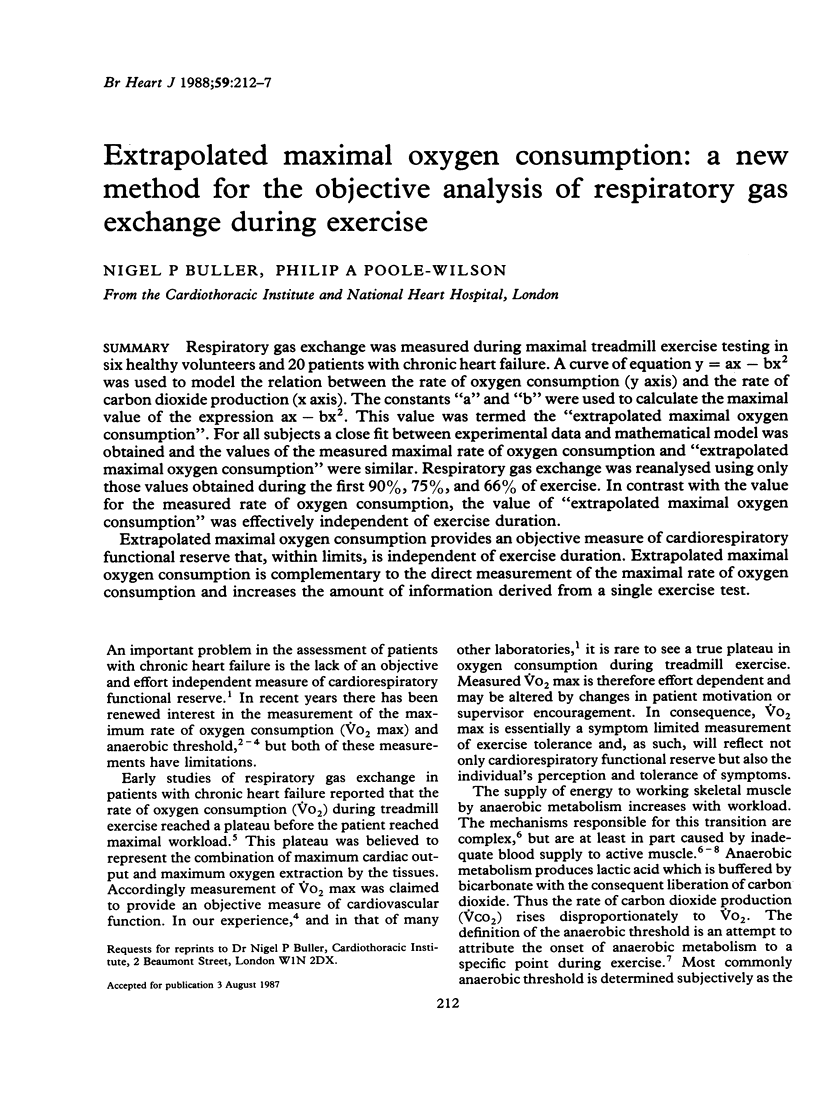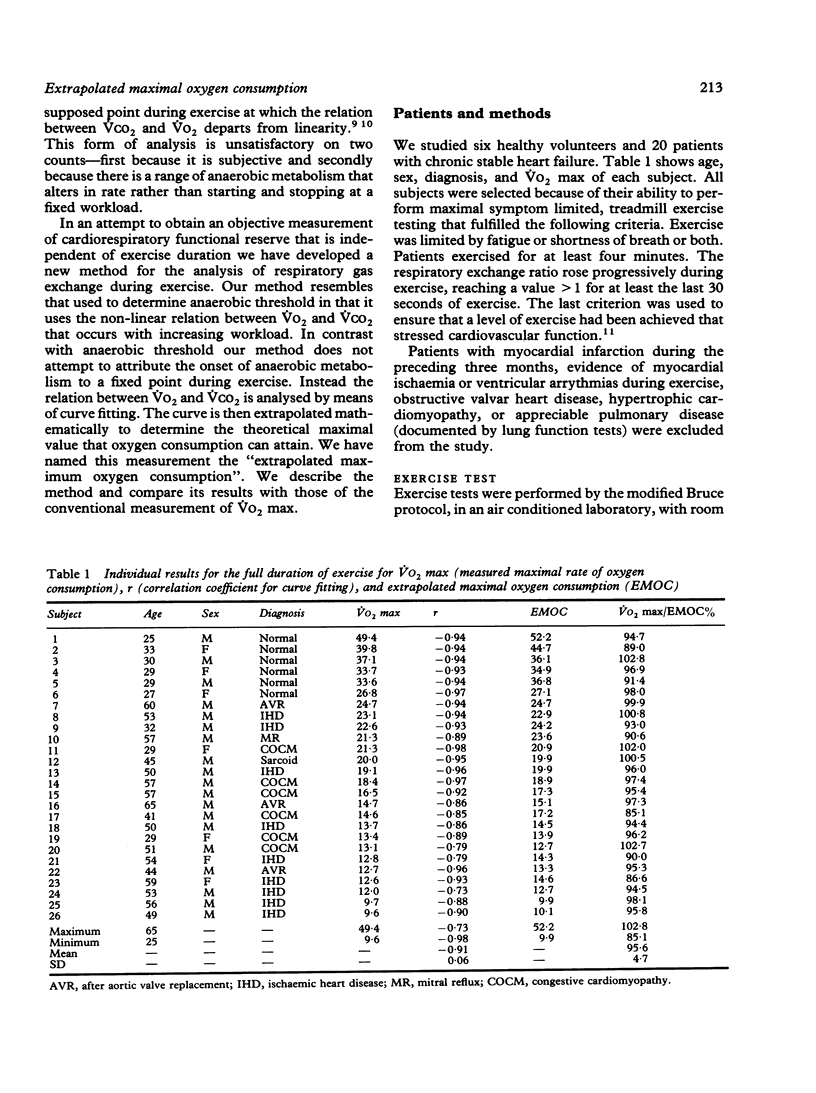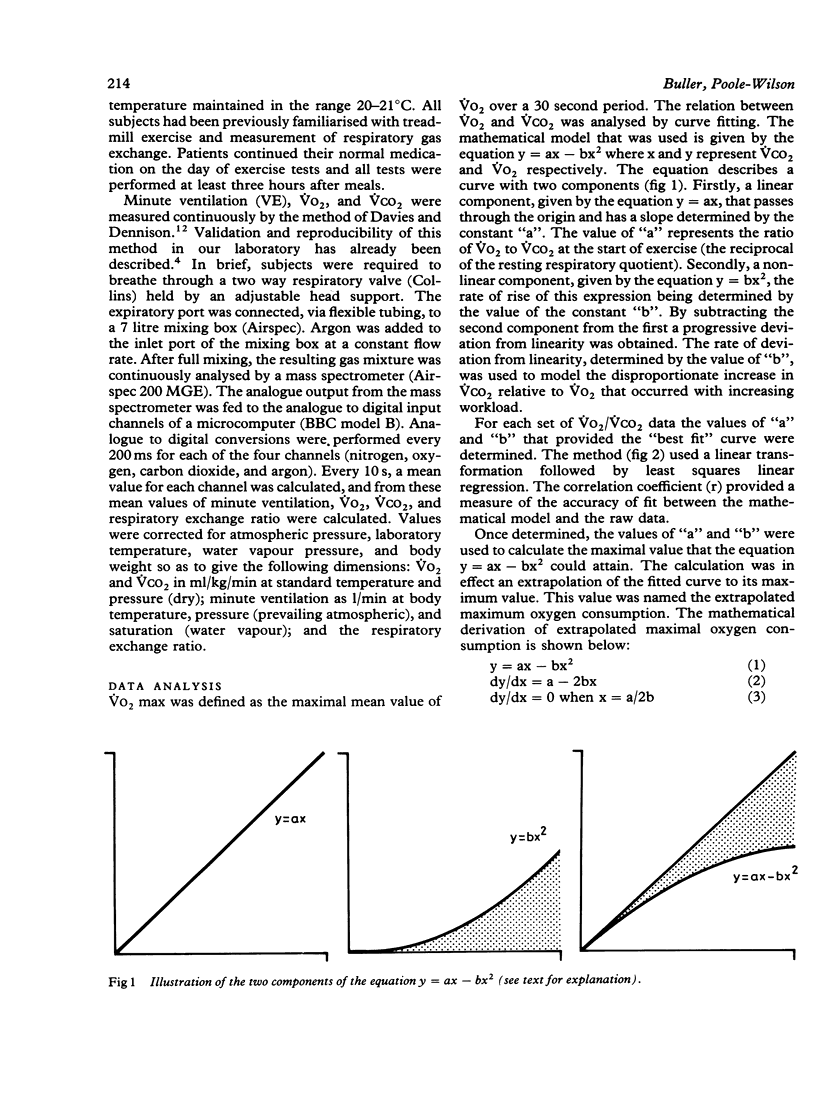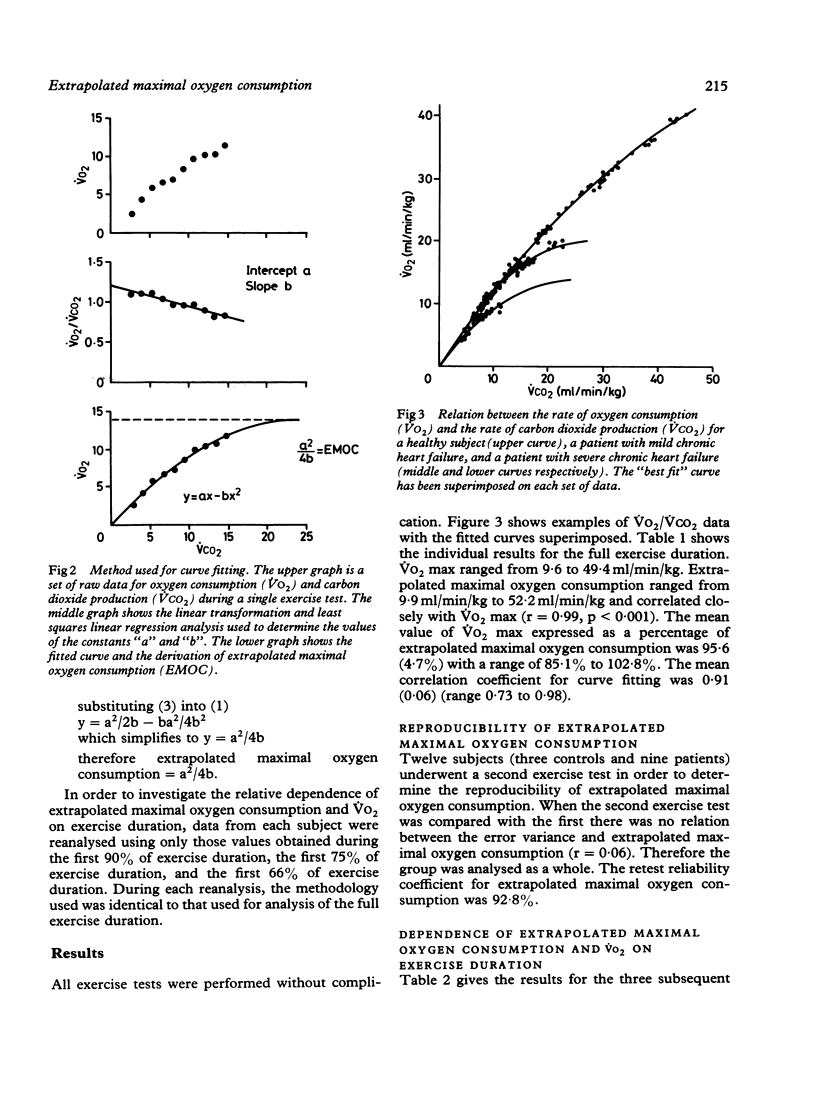Abstract
Respiratory gas exchange was measured during maximal treadmill exercise testing in six healthy volunteers and 20 patients with chronic heart failure. A curve of equation y = ax-bx2 was used to model the relation between the rate of oxygen consumption (y axis) and the rate of carbon dioxide production (x axis). The constants "a" and "b" were used to calculate the maximal value of the expression ax-bx2. This value was termed the "extrapolated maximal oxygen consumption". For all subjects a close fit between experimental data and mathematical model was obtained and the values of the measured maximal rate of oxygen consumption and "extrapolated maximal oxygen consumption" were similar. Respiratory gas exchange was reanalysed using only those values obtained during the first 90%, 75%, and 66% of exercise. In contrast with the value for the measured rate of oxygen consumption, the value of "extrapolated maximal oxygen consumption" was effectively independent of exercise duration. Extrapolated maximal oxygen consumption provides an objective measure of cardiorespiratory functional reserve that, within limits, is independent of exercise duration. Extrapolated maximal oxygen consumption is complementary to the direct measurement of the maximal rate of oxygen consumption and increases the amount of information derived from a single exercise test.
Full text
PDF





Selected References
These references are in PubMed. This may not be the complete list of references from this article.
- Davies N. J., Denison D. M. The measurement of metabolic gas exchange and minute volume by mass spectrometry alone. Respir Physiol. 1979 Feb;36(2):261–267. doi: 10.1016/0034-5687(79)90029-x. [DOI] [PubMed] [Google Scholar]
- Davis J. A. Anaerobic threshold: review of the concept and directions for future research. Med Sci Sports Exerc. 1985 Feb;17(1):6–21. [PubMed] [Google Scholar]
- Franciosa J. A. Exercise testing in chronic congestive heart failure. Am J Cardiol. 1984 May 15;53(10):1447–1450. doi: 10.1016/s0002-9149(84)91041-5. [DOI] [PubMed] [Google Scholar]
- LeJemtel T. H., Maskin C. S., Lucido D., Chadwick B. J. Failure to augment maximal limb blood flow in response to one-leg versus two-leg exercise in patients with severe heart failure. Circulation. 1986 Aug;74(2):245–251. doi: 10.1161/01.cir.74.2.245. [DOI] [PubMed] [Google Scholar]
- Lipkin D. P., Perrins J., Poole-Wilson P. A. Respiratory gas exchange in the assessment of patients with impaired ventricular function. Br Heart J. 1985 Sep;54(3):321–328. doi: 10.1136/hrt.54.3.321. [DOI] [PMC free article] [PubMed] [Google Scholar]
- NAIMARK A., WASSERMAN K., MCILROY M. B. CONTINUOUS MEASUREMENT OF VENTILATORY EXCHANGE RATIO DURING EXERCISE. J Appl Physiol. 1964 Jul;19:644–652. doi: 10.1152/jappl.1964.19.4.644. [DOI] [PubMed] [Google Scholar]
- WASSERMAN K., MCILROY M. B. DETECTING THE THRESHOLD OF ANAEROBIC METABOLISM IN CARDIAC PATIENTS DURING EXERCISE. Am J Cardiol. 1964 Dec;14:844–852. doi: 10.1016/0002-9149(64)90012-8. [DOI] [PubMed] [Google Scholar]
- Wasserman K., Whipp B. J., Koyl S. N., Beaver W. L. Anaerobic threshold and respiratory gas exchange during exercise. J Appl Physiol. 1973 Aug;35(2):236–243. doi: 10.1152/jappl.1973.35.2.236. [DOI] [PubMed] [Google Scholar]
- Weber K. T., Kinasewitz G. T., Janicki J. S., Fishman A. P. Oxygen utilization and ventilation during exercise in patients with chronic cardiac failure. Circulation. 1982 Jun;65(6):1213–1223. doi: 10.1161/01.cir.65.6.1213. [DOI] [PubMed] [Google Scholar]
- Wilson J. R., Martin J. L., Ferraro N. Impaired skeletal muscle nutritive flow during exercise in patients with congestive heart failure: role of cardiac pump dysfunction as determined by the effect of dobutamine. Am J Cardiol. 1984 May 1;53(9):1308–1315. doi: 10.1016/0002-9149(84)90085-7. [DOI] [PubMed] [Google Scholar]


